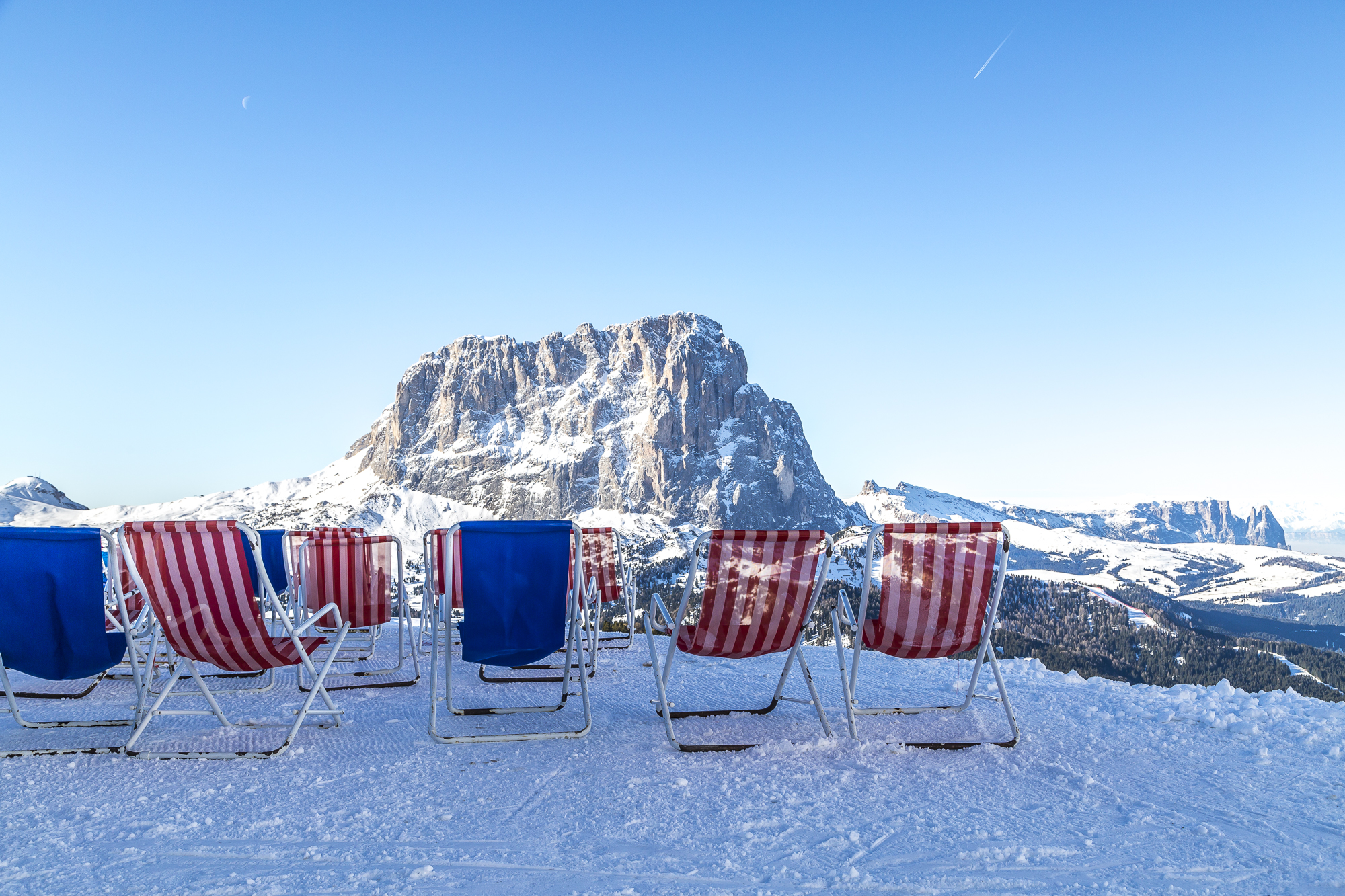
Sellaronda – skiing enjoyment in the Dolomites
It’s been a year since I first caught a glimpse of the magical Dolomites from afar. At that time, I had the desire to ski surrounded by this unique UNESCO World Heritage Site.
Last weekend the time had come. If you arrive by train, you have to plan around seven hours from Zurich. If you are travelling by car, you save some time in good traffic conditions, but you are also mercilessly at the mercy of long-distance traffic over the Brenner Pass. With these travel times, the Dolomite region of South Tyrol is a little outside the usual “comfort travel zone” of the Swiss. But we can get this cliché out of the way. Whether on the slopes, in the restaurants or at the cable cars, we met other Swiss holidaymakers everywhere. Funny detail: in almost all the restaurants we went to, Radio Swiss Pop was playing in the background. “Ewigi Liebi” is for breakfast – we can only feel welcome.
On the trail of Ladin culture
If you drive from Brunico into Val Badia, or Val Badia, you are entering a trilingual cultural region. German, Italian and Ladin are spoken here. High above the village of St. Martin in Badia, the ancient walls of the Ciastel de Tor were converted into an interactive museum in 2001 that sheds light on the history and culture of the approximately 30,000 Ladins of the Dolomites from various aspects. The two essential components of the culture are Ladin, which goes back to spoken folk Latin (synonymous with the generic term Romansh known to us) and the legends, which have their origin in the unique mountain landscape of the Dolomites.
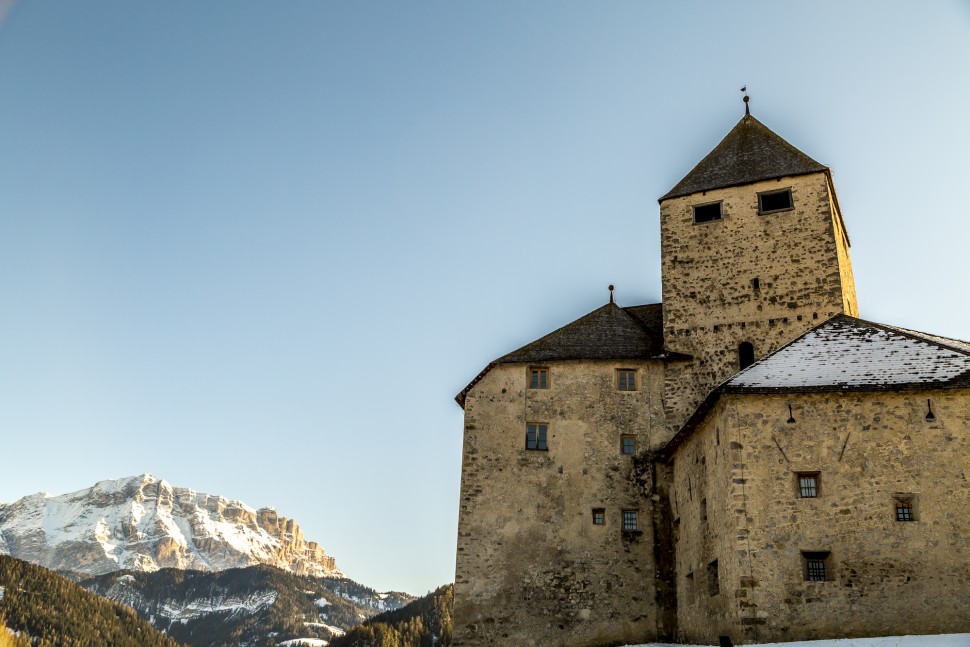
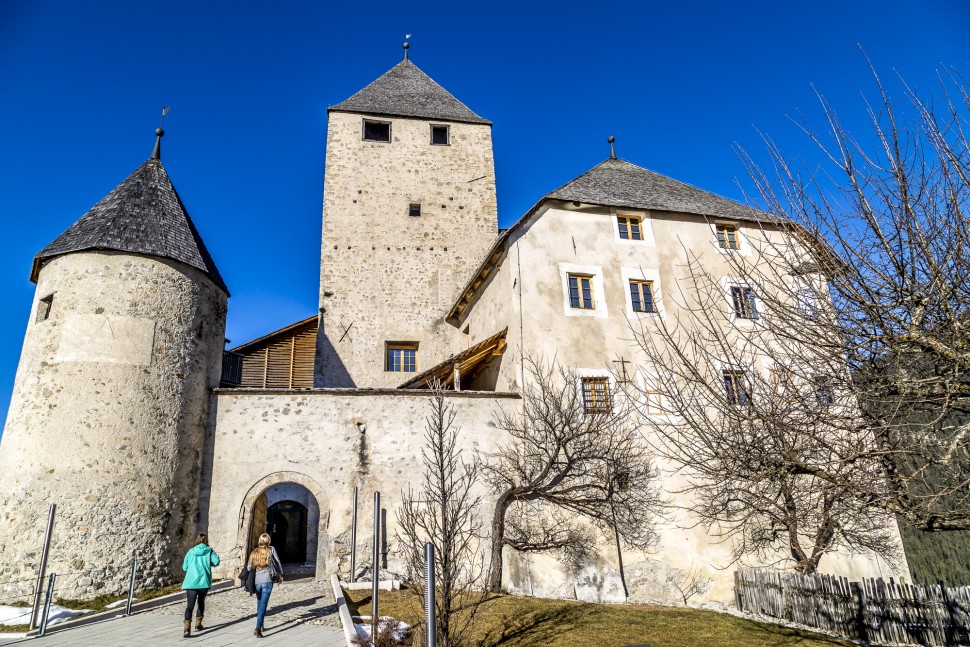
Rustic inns in the Alta Badia region invite their guests on a discovery tour through the traditional world of Ladin cuisine. Every Wednesday a Ladin cooking class takes place at the Sotciastel farm. If you prefer food to cooking, Maso Runch is the right place for you. In an old South Tyrolean parlour, guests are served traditional farm dishes such as barley soup, turtres (fried dumplings filled with spinach or sauerkraut) and Schlutzkrapfen. The menu is only described in Ladin, which kept the suspense of what comes next on the table high throughout the evening. By the way, Michelle Hunziker is said to have already stopped here.
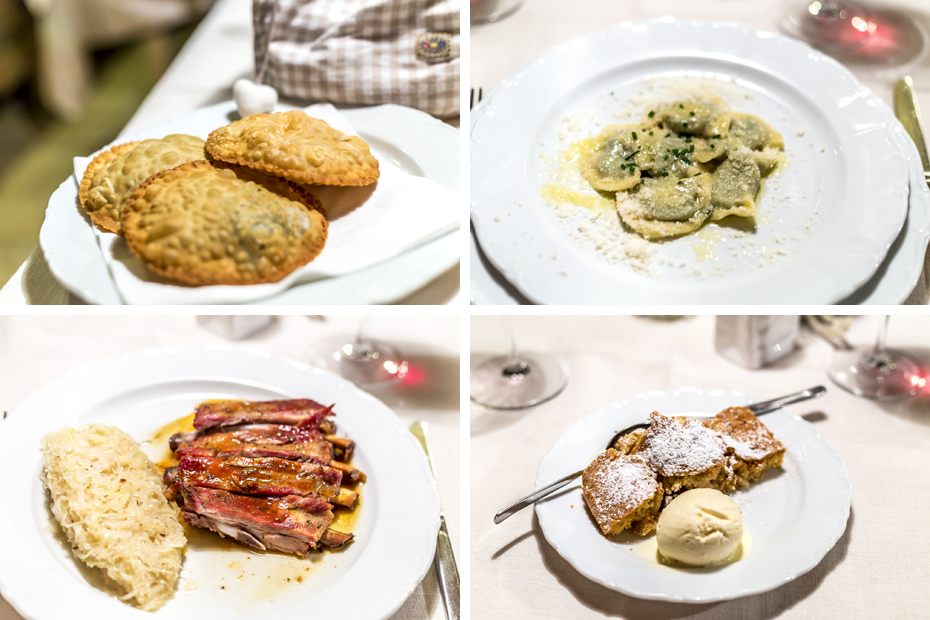
Sellaronda – Dolomiti Superski at a glance
A total of 1,200 km of snow-sure slopes in 12 ski areas make up the Dolomiti Superski region. And all you need is a ski ticket, which costs a staggering 53 euros during the high season. Unbelievable, isn’t it? In my opinion, Dolomiti Superski is one of the superlatives of European ski resorts.
The best entry route for newbies, like us, is the Sellaronda. Over a distance of 40 kilometres, the legendary tour leads over the four Dolomite passes around the Stellamass, connecting the ski areas of Alta Badia, Val Gardena/Alpe di Siusi, Val di Fassa and Arabba/Marmolada. Direct access to the route is from Corvara, Arabba, Canazei and Selva. We start the tour at 08:30 a.m. at the valley station of the Piz La Ila gondola station in la Villa and enter the feeder slopes to the Sellaronda. Unfortunately, the sun has been a bit too kind to South Tyrol this year and here and there the green meadows shimmer through. However, the slopes consistently have the best snow quality. The first four people at the valley station happen to be all Swiss. So much for enthusiasm for the region. Basically, it is recommended that you start the round trip before 9 a.m. if possible and plan around five to six hours.
The Sellaronda is well signposted. You can start the round trip in both directions. We decide to take the “green route” in a counterclockwise direction. Without any big breaks, we reach our starting point in Corvara after four hours of driving and are totally flashed. Definitely an experience of superlatives and ideally suited for people like me who like to have a “task” in skiing. On the one hand, you are busy following the route and are delighted with constantly changing panoramic views of the Dolomites. Surprisingly, even around noon, we don’t have to queue for more than two or three minutes at any lift, as the people are well spread out in the vastness of the ski resorts. Most of the slopes are easy to ski on and can be easily mastered even by mediocre skiers. In some places, there are both red and blue route alternatives to choose from.
We easily achieved our goal of being back in Alta Badia in the early afternoon to enjoy lunch in one of the great alpine huts of the ski area. As a reward, I order the well-deserved South Tyrolean cheese dumplings in the Piz Arlara hut with a view of Santa Croce, Sella and Sassongher. So-called slope food is very popular in Alta Badia. The best huts are presented in a compact guide and gourmet events such as a gourmet and wine ski safari take place throughout the season.
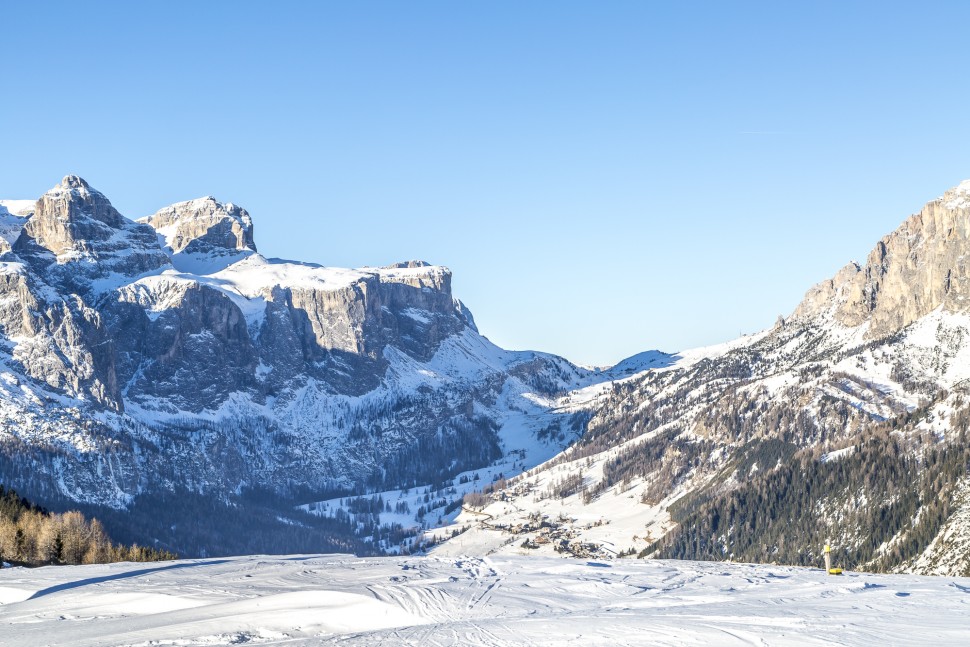
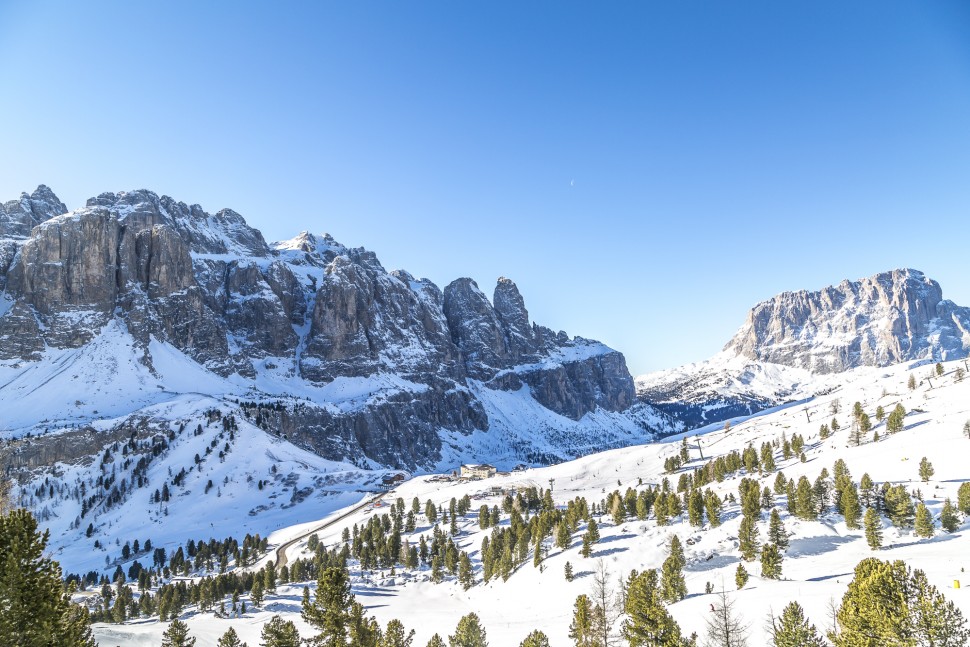
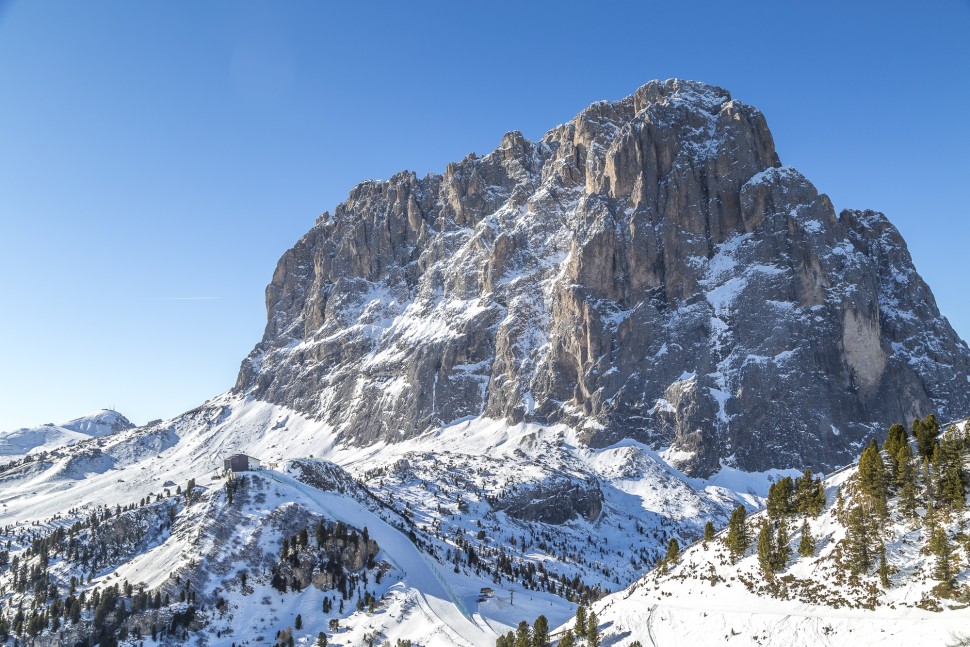
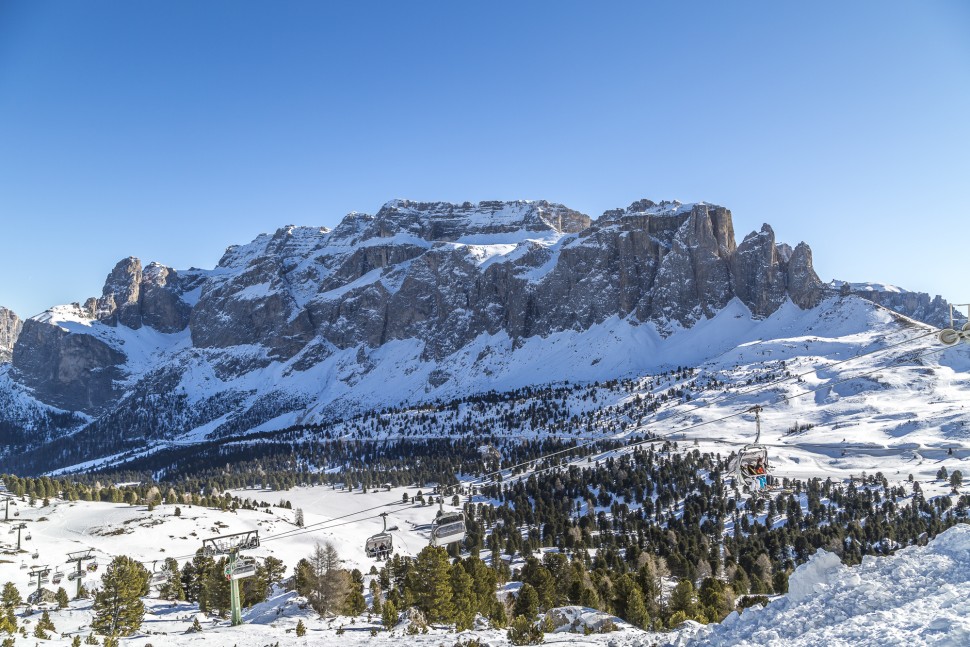
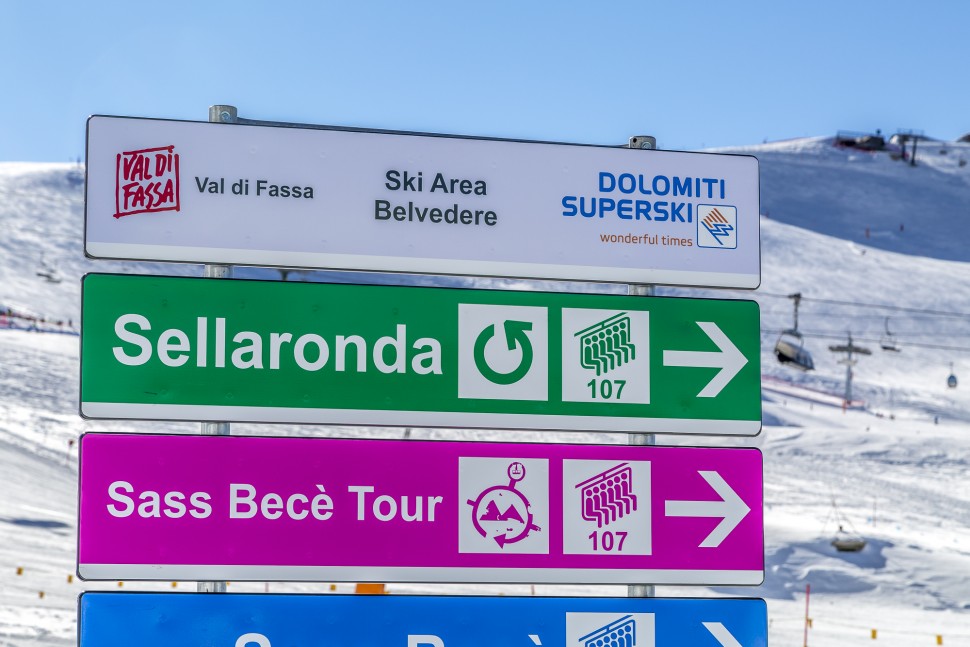
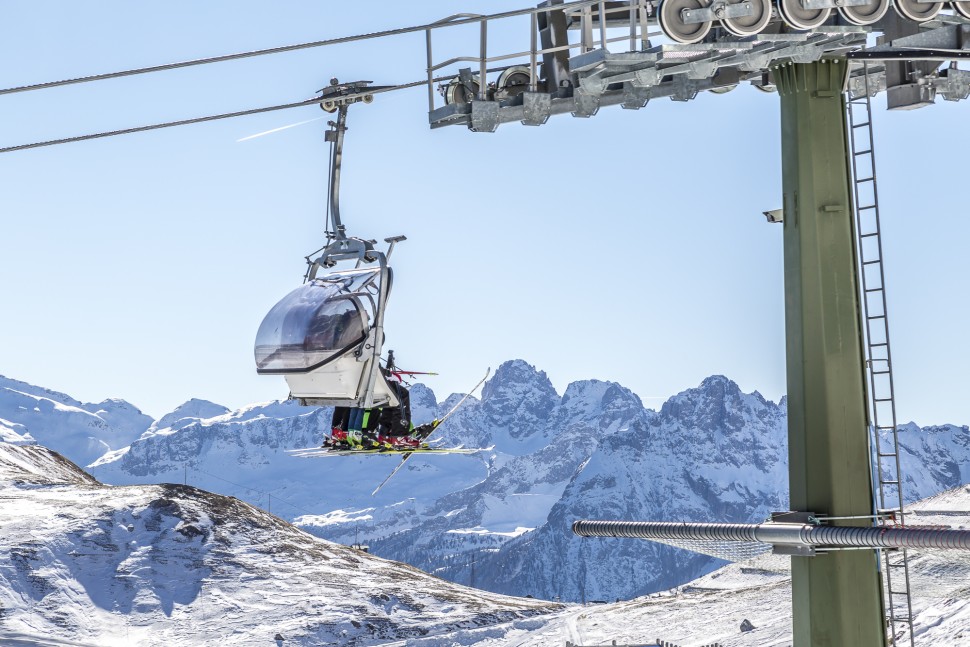
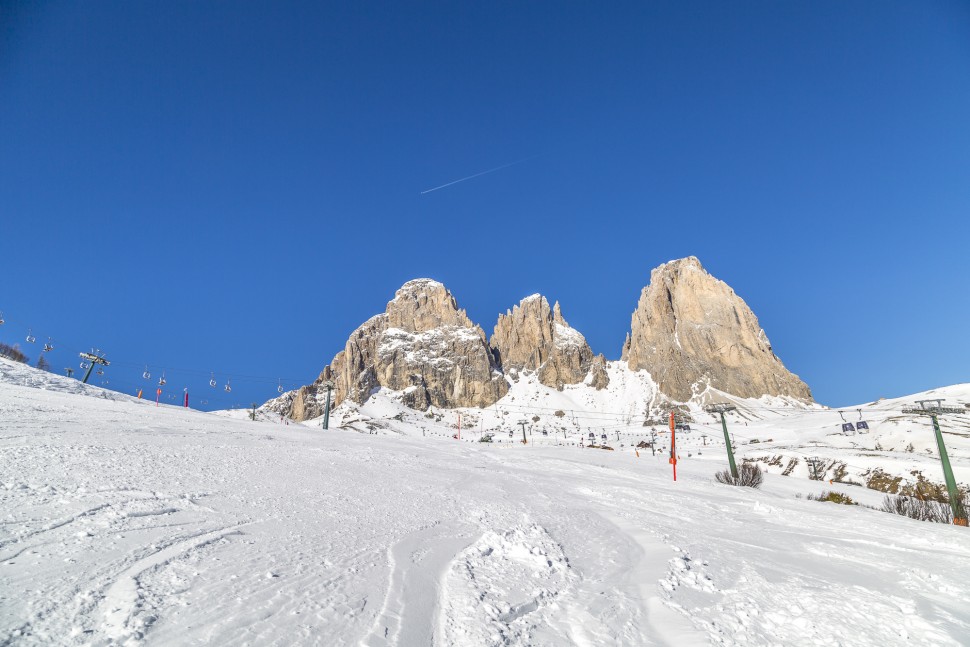
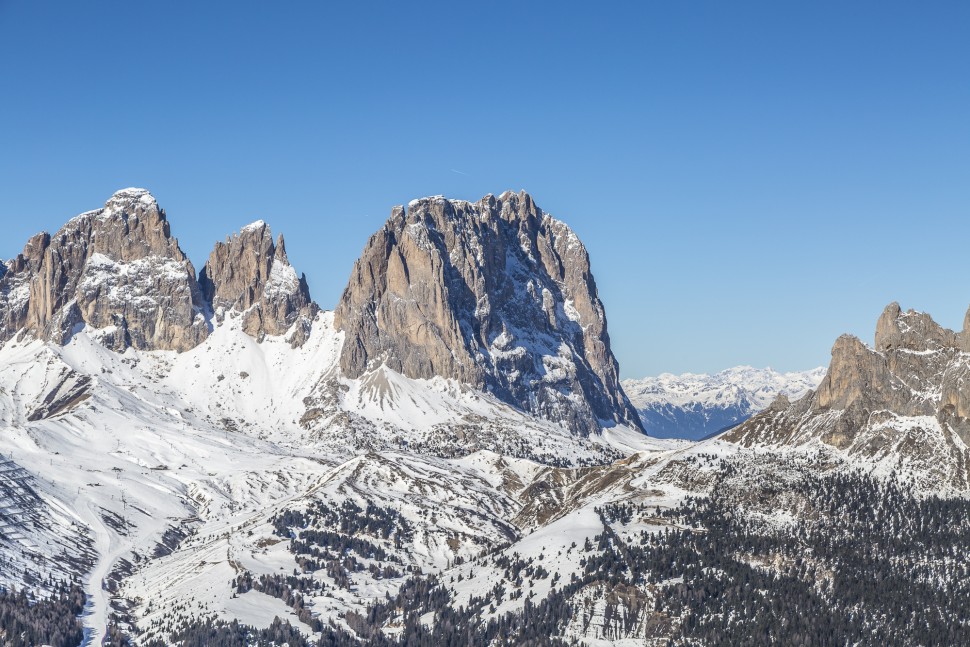

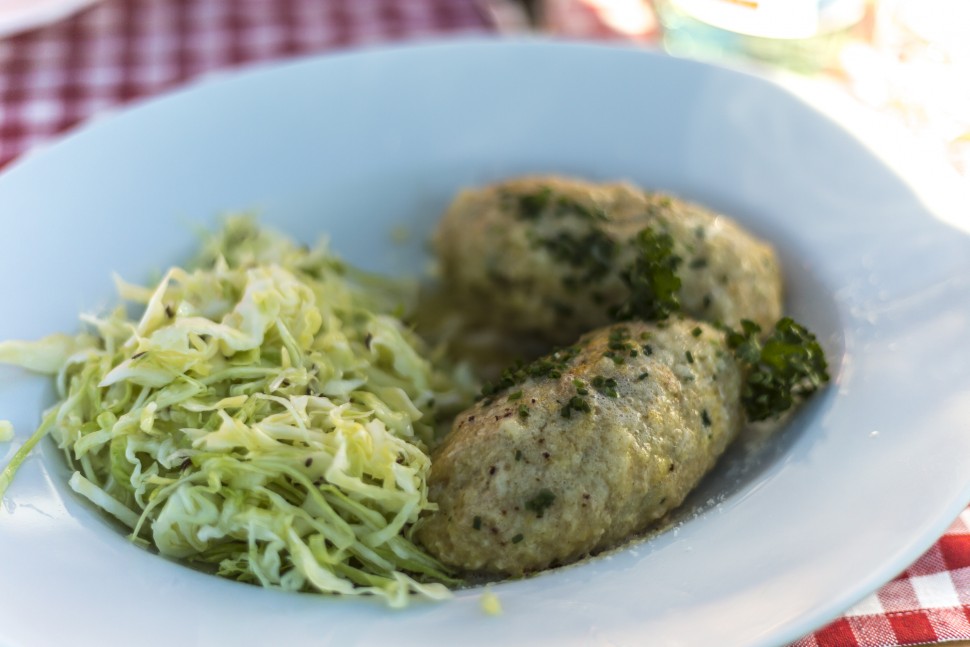
Las Vegas in the middle of Alta Badia
In the ski area of Alta Badia, not only the physical well-being of the ski guests is taken care of, but there is also the possibility to spend the night in comfortable rooms at over 2,000 m above sea level, right next to the slopes. After spending the first night down in La Villa at the Hotel Antines in 5 minutes walking distance to the valley station of the Piz la Ila gondola, we change to the mountain for the second night. At the Las Vegas Lodge right next to the Piz Sorega mountain station, it’s doubly worthwhile to stop for a bite to eat. In addition to a sun-drenched terrace with a magnificent view of the Sella massif in the west, the Sasso Croce in the north and the Marmolada in the south, there are also twelve comfortable rooms with the same panoramic view. If you sleep up here, you are guaranteed not to miss anything and start the day with the first ray of sunshine peeking out over the eastern peaks of the Dolomites, and end it with the last glitter behind the Sella massif. We toast to the successful circumnavigation of the Sella Group with an aperitif spritz and admire the evening glow of the Dolomites – called enrosadira – which slowly merges into the starry night sky. A true original is Ulli, the owner of the hut. As for the little snow this year, he shrugs his shoulders: “The Lord God means well with us. We Italians like to work, but not so much that we have to snow every day.”
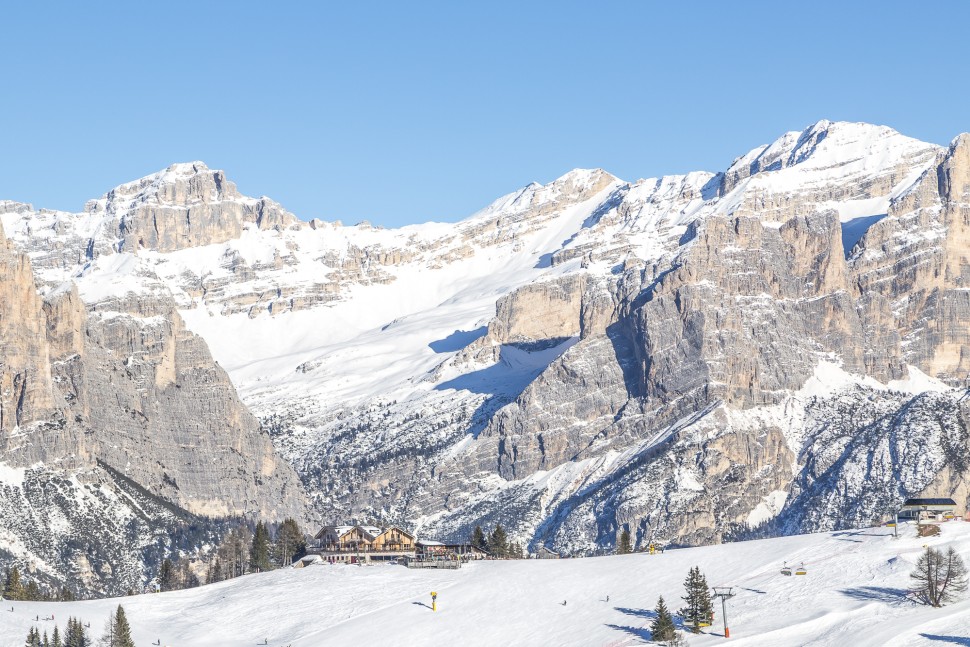
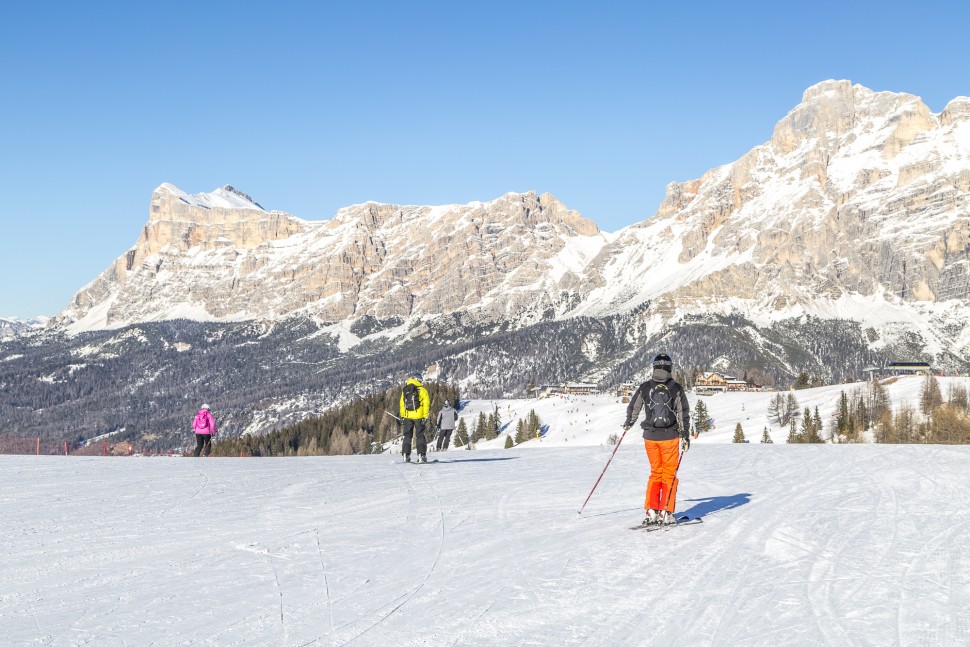
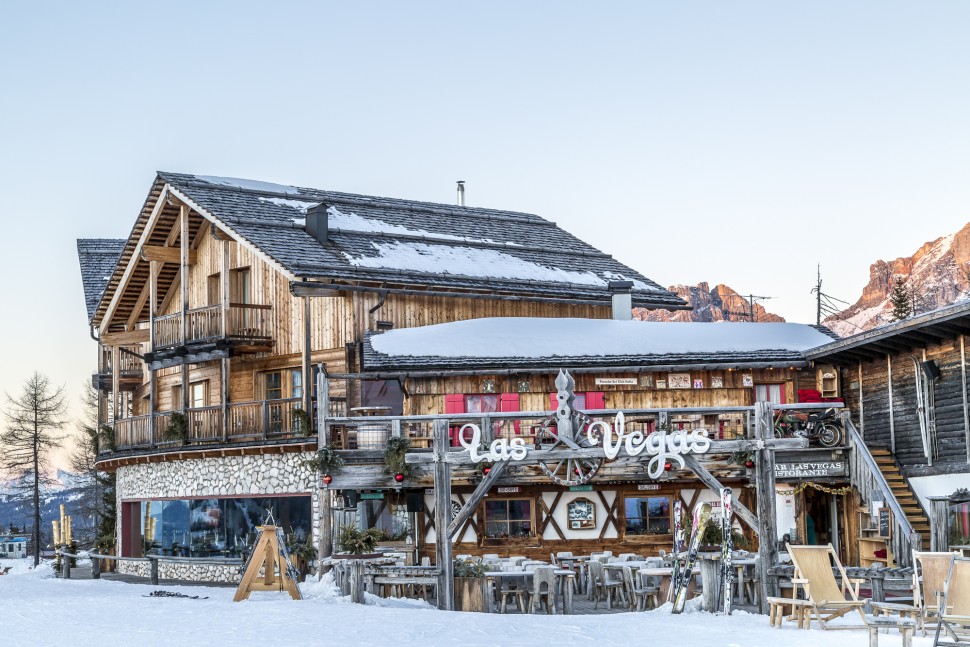
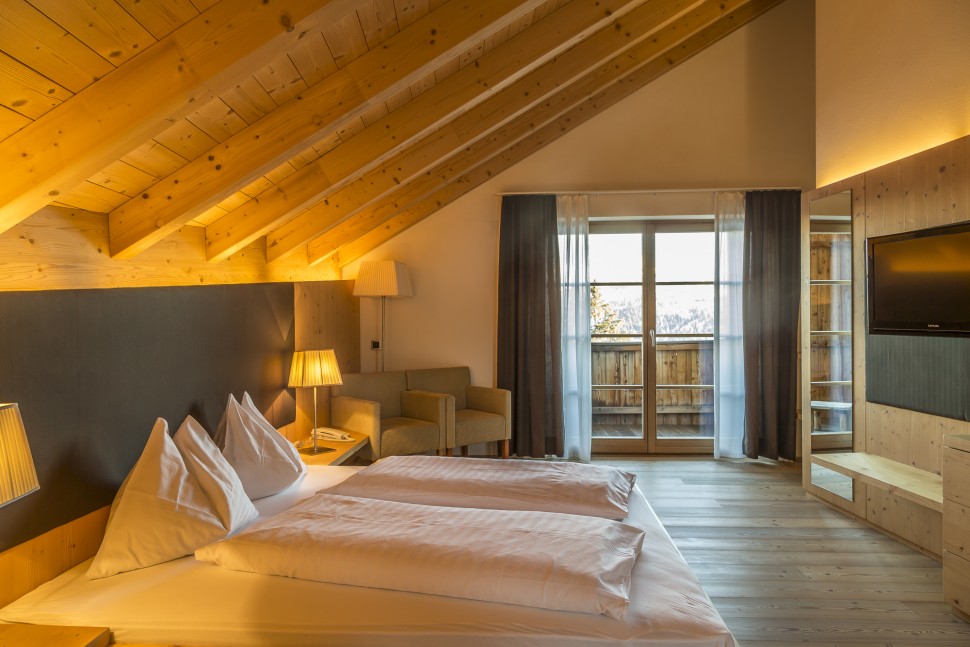

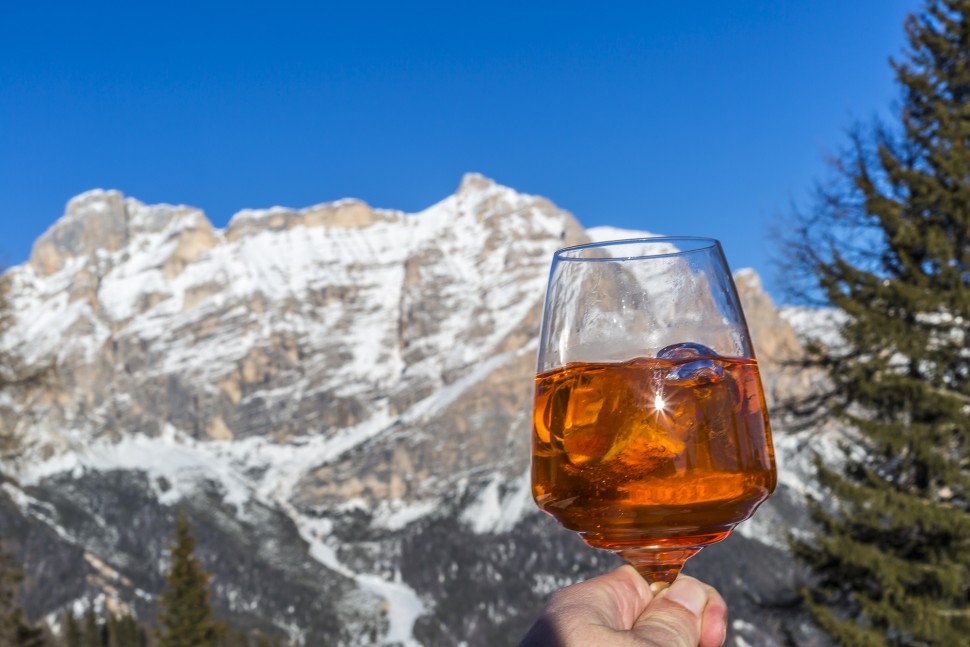
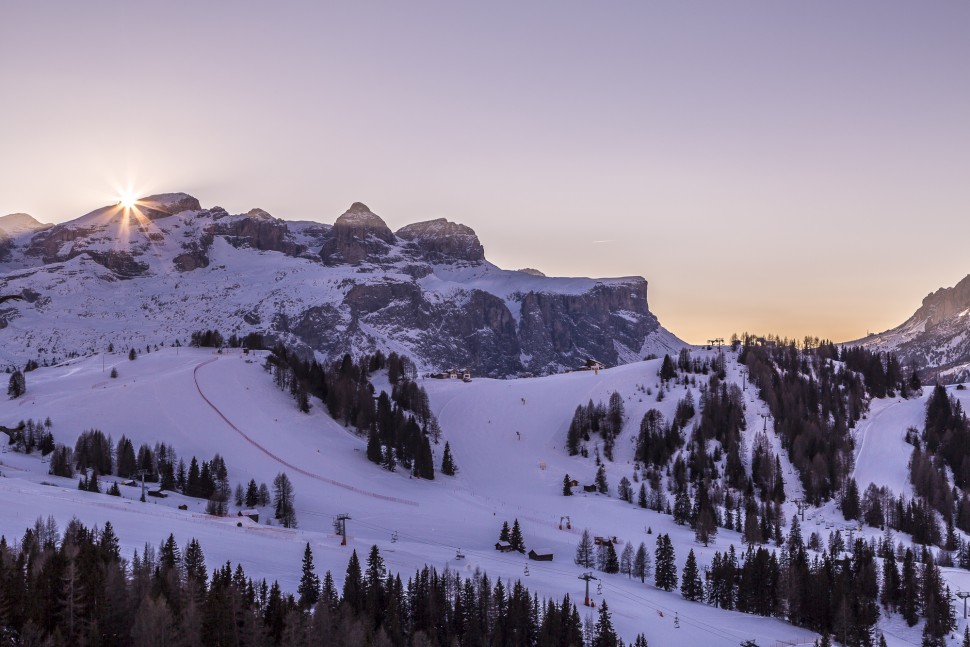
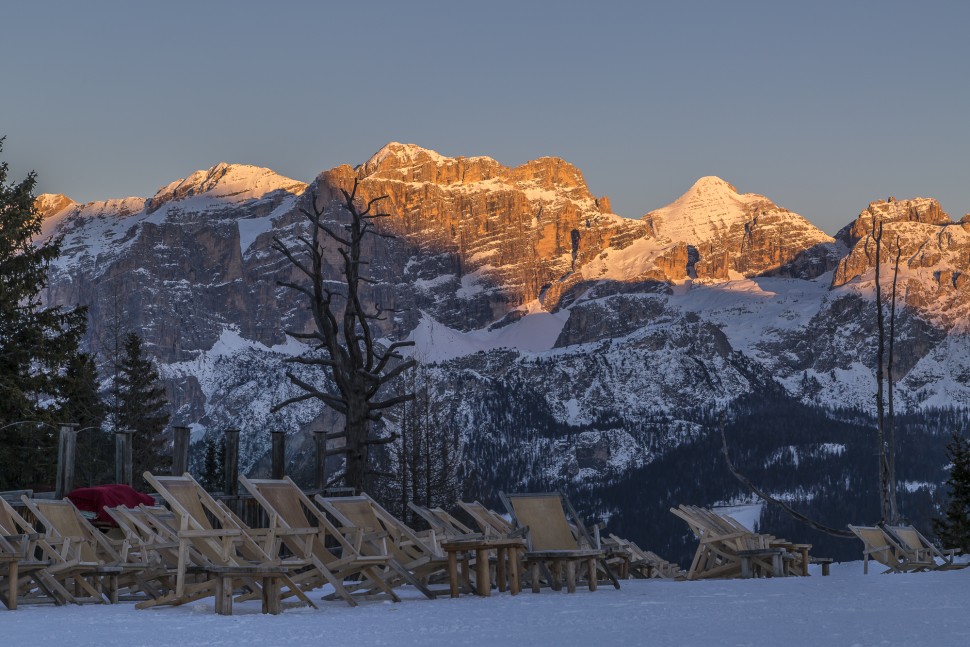
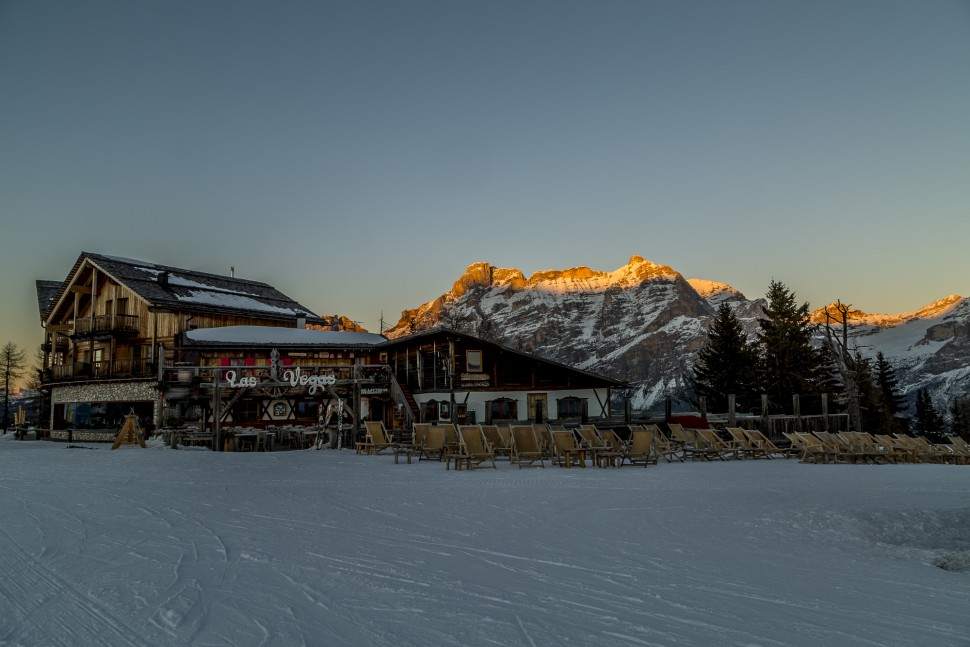
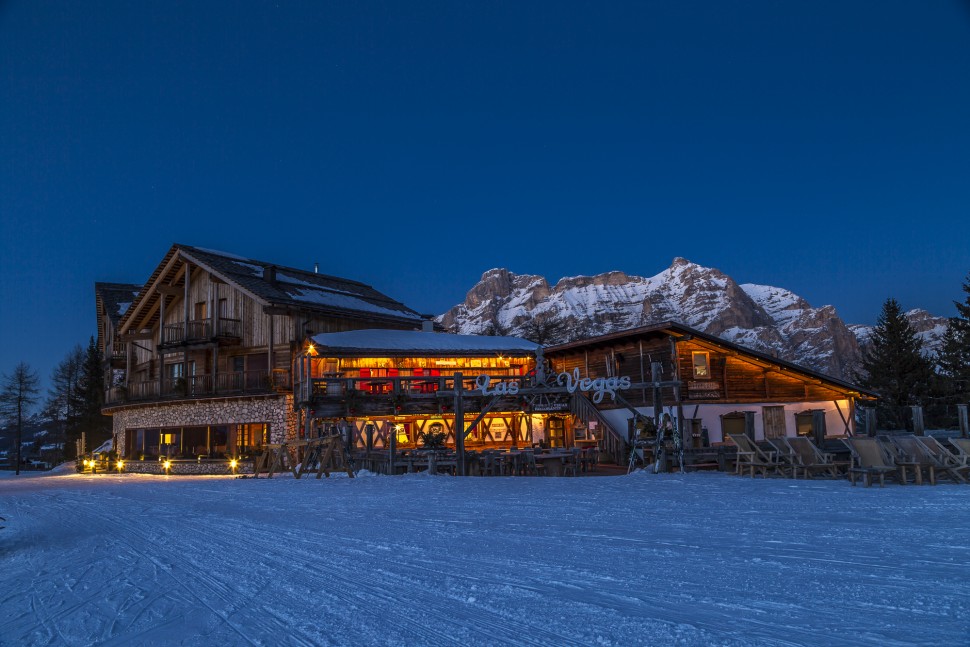
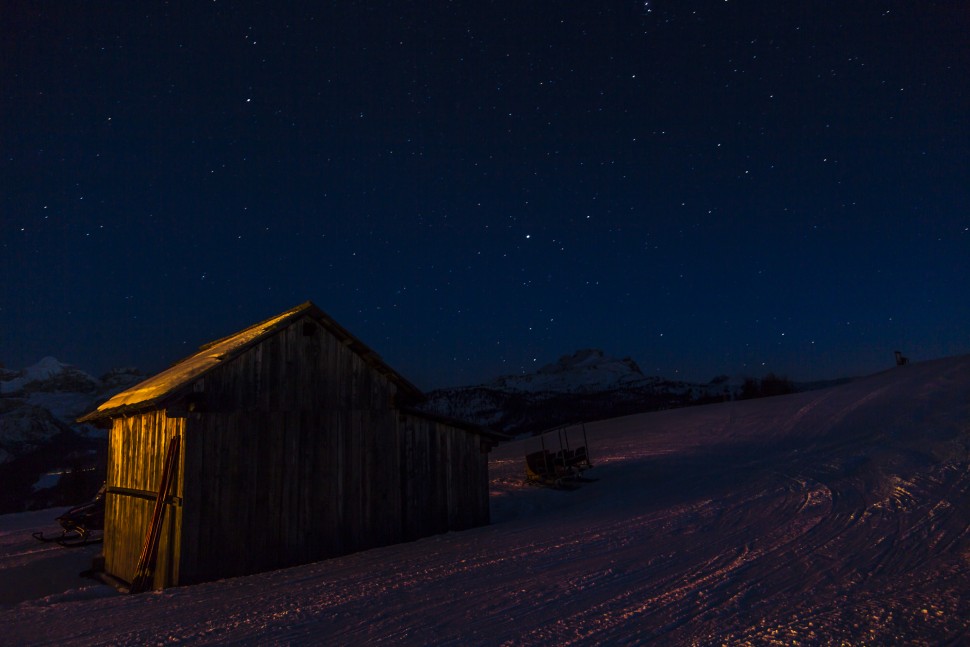
The next morning we are woken up from our dreams by the alarm clock. Finally, we want to see the sunrise in the Dolomites with our own eyes. But oh, apparently the otherwise so reliable South Tyrolean weather does not seem to be well-disposed towards us and we actually catch one of the 65 non-sunny days (on 300 days of the year the sun shines from the sky in this sun-drenched spot of Europe). Well, you can’t have everything and so we have a good reason to return to Alta Badia again. Because one thing is clear, the region offers superlative skiing pleasure and convinces with South Tyrolean culinary delights at the edge of the slopes.
Note: I was invited to South Tyrol by Südtirol Marketing. Thank you very much for this! As always, my readers can be sure that I always represent my views and enthusiasm.



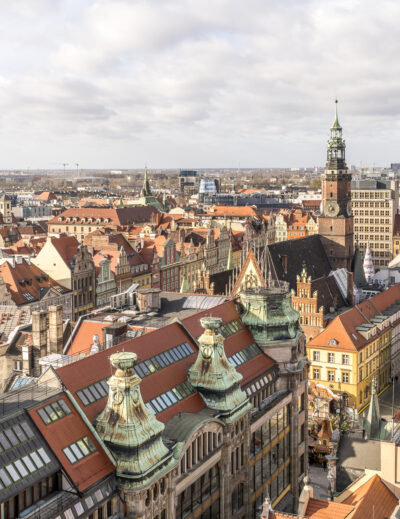
Leave a Reply